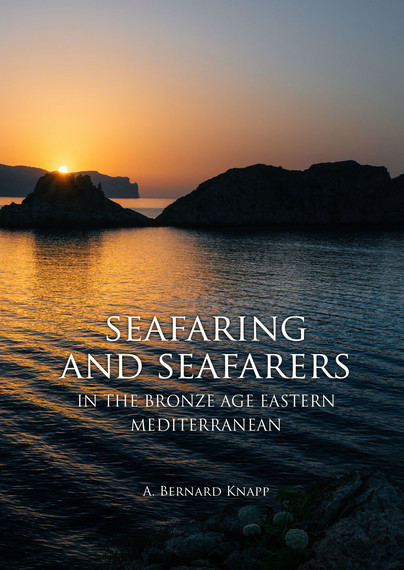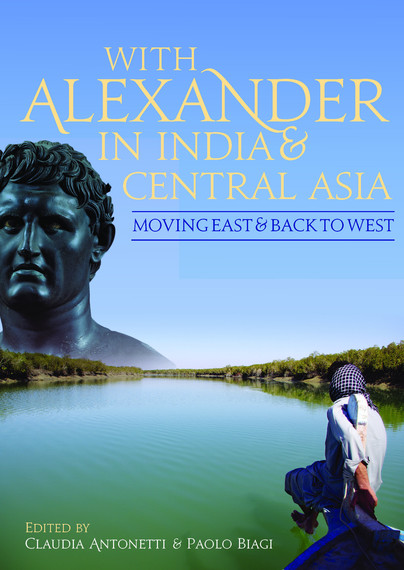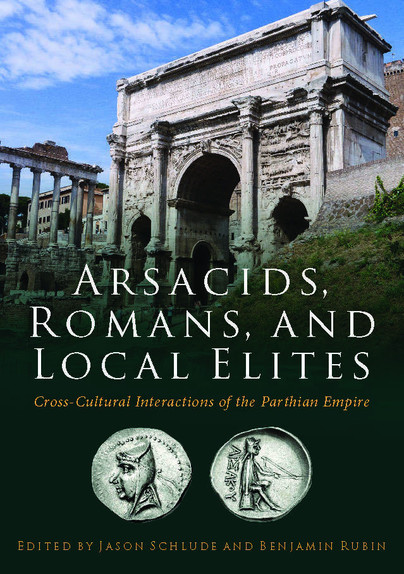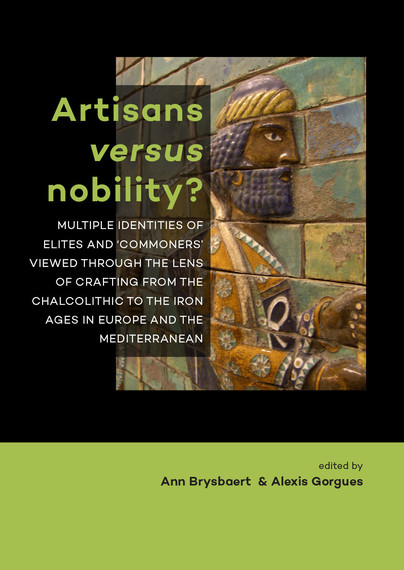

Pages: 500
ISBN: 9789088907678
Pub Date: 10 Oct 2019
Illustrations: 195fc/117bw
Pages: 500
ISBN: 9789088907654
Pub Date: 10 Oct 2019
Illustrations: 195fc/117bw
Description:
Soviet archaeological research in southern Turkmenistan revealed a series of small Late Neolithic and Aeneolithic villages strung along the streams that emerge from the Kopet Dag and water the narrow foothill zone separating the mountains from the Kara Kum desert. A commonly accepted premise of their work was that these communities garnered their technological knowledge if not their populations from regions to the south and west in present-day Iran.Since 2010 we have reinvestigated one of these sites, the small Late Neolithic (ca.
6200-5600 BCE) and early Aeneolithic (ca. 4800-4350 BCE) village of Monjukli Depe. Our research examines microhistories of cultural techniques as a source of insights into long-term and spatially extensive change as well as internal variations and similarities in material practices. This volume presents results of this work. A Bayesian modeling of 14C dates demonstrates a long hiatus between the Neolithic and Aeneolithic strata of the site as well as a hitherto unattested very early Aeneolithic phase (“Meana Horizon”). A sequence of densely built, well preserved Aeneolithic houses exhibits marked similarities to earlier Neolithic architecture in the region. Despite overall standardized plans, the houses reveal significant variations in internal features and practices. Similar flexibility within a set of common dispositions is evident in burial practices. Very limited quantities of pottery offer a stark contrast to the frequent occurrence of spindle whorls, indicating a substantial production of thread, and to a large and varied assemblage of clay tokens. A wide variety of fire installations attests to routinized handling of fire, which did not prevent at least one building from succumbing to a conflagration. Animal herding was heavily based on sheep and goats, while cattle figured prominently in feasts. The Meana tradition at Monjukli Depe exhibits significant structural similarities to other early village societies in Western Asia and will make this volume of interest to scholars working on similar times and contexts.

Format: Paperback
Pages: 256
ISBN: 9781789252545
Pub Date: 15 May 2019
Illustrations: b/w and colour
Description:
The study of dress in antiquity has expanded in the last 20 years, evolving from investigations of costume and ethnicity in ancient art and texts and analyses of terms relating to textiles and their production, to broader studies of the social roles of dressed bodies in ancient contexts, texts, and images. This volume emerges from Approaches to Dress and the Body sessions at the Annual Meetings of the American Schools of Oriental Research in 2016 and 2017, as well as sessions relating to ancient dress and personal adornment at the Annual Meetings of the Archaeological Institute of America in 2018. Following the broad notion of dress first presented in Eicher and Roach-Higgins in 1992 as the “assemblage of modifications of the body and/or supplements to the body,” the contributions to this volume study varied materials, including physical markings on the body, durable goods related to dressed bodies in archaeological contexts, dress as represented in the visual arts as well as in texts, most bringing overlapping bodies of evidence into play.
Examining materials from a range of geographic and chronological contexts including the prehistoric Caucasus, Iran, Mesopotamia, Syria and the Levant, the Aegean, Greece, the Roman world and Late Antique Central Asia, this volume takes as its starting point that dress does not simply function as a static expression of identity or status, inscribed on the body to be “read” by others, but is a dynamic component in the construction, embodiment, performance and transformation of identity.


Pages: 285
ISBN: 9789088905551
Pub Date: 20 Sep 2018
Illustrations: 20fc/40bw
Pages: 285
ISBN: 9789088905544
Pub Date: 20 Sep 2018
Illustrations: 20fc/40bw
Description:
Seafaring is a mode of travel, a way to traverse maritime space that enables not only the transport of goods and materials but also of people and ideas — communicating and sharing knowledge across the sea and between different lands. Seagoing ships under sail were operating between the Levant, Egypt, Cyprus and Anatolia by the mid-third millennium BC and within the Aegean by the end of that millennium. By the Late Bronze Age (after ca.
1700/1600 BC), seaborne trade in the eastern Mediterranean made the region an economic epicentre, one in which there was no place for Aegean, Canaanite or Egyptian trading monopolies, or ‘thalassocracies’. At that time, the world of eastern Mediterranean seafaring and seafarers became much more complex, involving a number of different peoples in multiple networks of economic and social exchange. This much is known, or in many cases widely presumed. Is it possible to trace the origins and emergence of these early trade networks? Can we discuss at any reasonable level who was involved in these maritime ventures? Who built the early ships in which maritime trade was conducted, and who captained them? Who sailed them? Which ports and harbours were the most propitious for maritime trade? What other evidence exists for seafaring, fishing, the exploitation of marine resources and related maritime matters? This study seeks to address such questions by examining a wide range of material, documentary and iconographic evidence, and re-examining a multiplicity of varying interpretations on Bronze Age seafaring and seafarers in the eastern Mediterranean, from Anatolia in the north to Egypt in the south and west to Cyprus. The Aegean world operated on the western boundaries of this region, but is referred to more in passing than in engagement. Because the social aspects of seafaring and transport, the relationship different peoples had with the sea, and the whole notion of ‘seascapes’ are seldom discussed in the literature of the eastern Mediterranean Bronze Age, this volume devotes significant attention to such factors, including: mobility, connectivity, the length and purpose as well as the risk of the journey, the knowledge and experience of navigation and travel, ‘working’ the sea, the impact of distance and access to the exotic upon peoples’ identities and ideologies, and much more.

Format: Hardback
Pages: 442
ISBN: 9781789250848
Pub Date: 30 Aug 2018
Illustrations: b/w and colour
Description:
The prehistoric site of Tell Sabi Abyad lies in the valley of the Balikh River, a tributary of the Euphrates in northern Syria. Between 2001 and 2008 excavations focused on the north-western, western and southwestern slopes of the main mound (Operations III, IV and V). Relentlessly Plain presents the results of detailed investigations into the 7th millennium BC ceramic assemblages recovered from those excavations by an interdisciplinary group of scholars.
The 7th millennium BC was an era of profound cultural transformations in the ancient Near East. This began with the sustained adoption of pottery c. 7000 cal BC, followed by the slow advance of the new craft as pottery containers became increasingly common. Important social, economic and ritual activities became increasingly dependent on pottery containers. Over the course of the millennium, prehistoric communities began to cook food and drink, store surpluses, and send symbolic messages via the medium of pottery vessels. Tell Sabi Abyad offers a unique vantage point from which to study these innovations. Supported by a strong program of radiocarbon dating, extensive excavations have revealed a lengthy, continuous sequence of prehistoric occupation from the start of the Late Neolithic into the Early Halaf period. Pottery changed dramatically in the course of this long trajectory. Whereas in the initial stages pottery containers were rare, at the end of the sequence they represented a mass-produced craft. Initially ceramic containers were visually conspicuous, occasionally decorated, but masses of relentlessly plain pottery characterize subsequent stages. The book combines detailed discussion of themes relevant to the study of early ceramics in the ancient Near East with extensive analyses of each of the individual wares currently distinguished at the site. Separate chapters offer perspectives on the archaeometry, the depositional context, early repairs, food residues, provenance and associated human burials.

Format: Hardback
Pages: 245
ISBN: 9788793423046
Pub Date: 01 Feb 2018
Description:
The Early Bronze Age Tombs of Jebel Hafit presents fifty burial mounds excavated by Moesgaard Museum in 1961-1971 in the Emirate of Abu Dhabi in the Arabian Gulf. These excavations were the first archaeological investigations at all in this part of the world, and they throw light on the beginning of the Bronze Age on the Oman Peninsula. The graves represent a fundamental transformation of the relationship between humans and the environment in the region, preceding the emergence of oasis agriculture.
The graves contain the first objects of copper in the region and show that the exploitation of copper from the Oman mountains had begun. The tombs of Jebel Hafit are inscribed on UNESCO’s World Heritage list. The publication is the result of a cooperation between the Abu Dhabi Tourism & Culture Authority and Moesgaard Museum.

Format: Hardback
Pages: 240
ISBN: 9781785705960
Pub Date: 31 May 2017
Illustrations: b/w
Description:
A recent surge of interest in network approaches to the study of the ancient world has enabled scholars of the Roman Empire to move beyond traditional narratives of domination, resistance, integration and fragmentation. This relational turn has not only offers tools to identify, map, visualize and, in some cases, even quantify interaction based on a variety of ancient source material, but also provides a terminology to deal with the everyday ties of power, trade, and ideology that operated within, below, and beyond the superstructure of imperial rule. Thirteen contributions employ a range of quantitative, qualitative and descriptive network approaches in order to provide new perspectives on trade, communication, administration, technology, religion and municipal life in the Roman Near East and adjacent regions.

Format: Paperback
Pages: 304
ISBN: 9781785705847
Pub Date: 29 Mar 2017
Illustrations: b/w and colour
Description:
Alexander conquered most parts of the Western World, but there is a great deal of controversy over his invasion of India, the least known of his campaigns. In BC 327 Alexander came to India, and tried to cross the Jhelum river for the invasion, but was then confronted by King Porus who ruled an area in what is now the Punjab. According to Indian history he was stopped by Porus at his entry into the country, but most of the world still believes that Alexander won the battle.
Fearing the prospect of facing other large armies and exhausted by years of campaigning, Alexander's army mutinied at the Hyphasis River, refusing to march farther east. This river thus marks the easternmost extent of Alexander's conquests. Twelve papers in this volume examine aspects of Alexander’s Indian campaign, the relationship between him and his generals, the potential to use Indian sources, and evidence for the influence of policies of Alexander in neighbouring areas such as Iran and Russia.

Format: Paperback
Pages: 184
ISBN: 9781785705922
Pub Date: 21 Mar 2017
Illustrations: b/w
Description:
For almost 500 years (247 BCE–224 CE), the Arsacid kings of Parthia ruled over a vast multi-cultural empire, which encompassed much of central Asia and the Near East. The inhabitants of this empire included a complex patchwork of Hellenized Greek-speaking elites, Iranian nobility, and semi-nomadic Asian tribesman, all of whom had their own competing cultural and economic interests. Ruling over such a diverse group of subjects required a strong military and careful diplomacy on the part of the Arsacids, who faced the added challenge of competing with the Roman empire for control of the Near East.
This collection of new papers examines the cross-cultural interactions among the Arsacids, Romans, and local elites from a variety of scholarly perspectives. Contributors include experts in the fields of ancient history, archaeology, classics, Near Eastern studies, and art history, all of whom participated in a multi-year panel at the annual conference of the American Schools of Oriental Research between 2012 and 2014. The seven chapters investigate different aspects of war, diplomacy, trade, and artistic production as mechanisms of cross-cultural communication and exchange in the Parthian empire. Arsacids, Romans, and Local Elites will prove significant for those interested in the legacy of Hellenistic and Achaemenid art and ideology in the Parthian empire, the sometimes under-appreciated role of diplomacy in creating and maintaining peace in the ancient Middle East, and the importance of local dynasts in kingdoms like Judaea, Osrhoene, and Hatra in shaping the geopolitical landscape of the Near East, alongside the imperial powerhouses of Rome and Parthia.


Pages: 222
ISBN: 9789088903977
Pub Date: 20 Mar 2017
Illustrations: 80bw/20fc
Pages: 222
ISBN: 9789088903960
Pub Date: 20 Mar 2017
Illustrations: 80bw/20fc
Description:
In prehistoric Europe hierarchic societies arose and developed technological systems and processes in the production of objects related to everyday use, on the one hand, and items of religious and symbolic character emulating prestige and luxury, on the other, while both types of objects may not always be clearly distinguishable. This volume deals with questions of how artisans and other social groups, involved in these productive processes and social practices, reacted to and interacted with the demands connected with elites identities formation, affirmation reconfirmation practices. Innovations and the development of new technologies designed to satisfy the needs of ostentatious behaviour and achieving prestige are key issues of this volume.
For example, how can we identify the consequences of such processes, how can we define the role(s) that the craftspeople played in such contexts, and are these always as clear-cut as usually portrayed? The book’s common aim is to investigate the economic, socio-political, as well as the technological contexts and backgrounds of the make-up of material culture and technologies in these periods. We examine which role(s) artisans may have played in status and identity formation processes, in rituals and in symbolic performances, in other words, in each aspect of life and death of selected Chalcolithic, Bronze and Iron Age populations in Europe. Many aspects of the social interaction patterns between the different groups of people in those periods have not been adequately discussed and investigated, especially the artisans’ important role(s). This volume aims to redress these imbalances by investigating how social groups interacted with each other, and how we may recognize such interactions in the material remains.

Format: Hardback
Pages: 464
ISBN: 9781782978442
Pub Date: 17 Feb 2017
Illustrations: b/w and colour illustrations
Description:
This two part volume brings together over 60 specialists to present 31 papers on the latest research into archaeozoology of the Near East. The papers are wide-ranging in terms of period and geographical coverage: from Palaeolithic rock shelter assemblages in Syria to Byzantine remains in Palestine and from the Caucasus to Cyprus. Papers are grouped into thematic sections examining patterns of Palaeolithic and Neolithic subsistence in northern Mesopotamia, Anatolia and the Iranian plateau; Palaeolithic to Neolithic faunal remains from Armenia; animal exploitation in Bronze Age urban sites; new evidence concerning pastoralism, nomadism and mobility; aspects of domestication and animal exploitation in the Arabian peninsula; several case studies on ritual animal deposits; and specific analyses of patterns of animal exploitation at urban sites in Turkey, Palestine and Jordan.
This important collection of significant new work builds on the well-established foundation of previous ICAZ publications to present the very latest results of archaeozoological research in the prehistory of this formative region in the development of animal exploitation.

Format: Hardback
Pages: 432
ISBN: 9781785703591
Pub Date: 31 Jan 2017
Description:
Life and Death in Asia Minor combines contributions in both archaeology and bioarchaeology in Asia Minor in the period ca. 200 BC – AD 1300 for the first time. The archaeology topics are wide-ranging including death and territory, death and landscape perception, death and urban transformations from pagan to Christian topography, changing tomb typologies, funerary costs, family organization, funerary rights, rituals and practices among pagans, Jews, and Christians, inhumation and Early Byzantine cremations and use and reuse of tombs.
The bioarchaeology chapters use DNA, isotope and osteological analyses to discuss, both among children and adults, questions such as demography and death rates, pathology and nutrition, body actions, genetics, osteobiography, and mobility patterns and diet. The areas covered in Asia Minor include the sites of Hierapolis, Laodikeia, Aphrodisias, Tlos, Ephesos, Priene, Kyme, Pergamon, Amorion, Gordion, Boğazkale, and Arslantepe. The theoretical and methodological approaches used make it highly relevant for people working in other geographical areas and time periods. Many of the articles could be used as case studies in teaching at schools and universities. An important objective of the publication has been to see how the different types of results emerging from archaeological and natural science studies respectively could be integrated with each other and pose new questions on ancient societies, which were far more complex than historical and social studies of the past often manage to transmit.

Format: Hardback
Pages: 408
ISBN: 9789088903878
Pub Date: 15 Jan 2017
Illustrations: >200fc
Description:
The famous ‘Silk Roads’ have long evoked a romantic picture of travel through colourful civilizations that connected the western and eastern poles of Eurasia, facilitating the exchange of exotic luxury goods, peoples, pathogens and ideas. But how far back can we trace such interaction? Increasing evidence suggests considerable time-depth for Trans-Eurasian exchange, with the expanding urban networks of the Bronze Age at times anticipating later caravan routes.
Tying the Threads of Eurasia applies advanced GIS modelling and critical social archaeology to carefully selected material remains from these earlier connections in order to understand and explain macro-scale processes of interaction in the wider ancient Near East between 3000 and 1500BC. Evidence related to precious stone, metal and textile objects found in Transcaucasia, eastern Anatolia and Central Asia are examined critically and spatially to provide new insights into changing socio-economic relations within and beyond these case-study regions.This book will be of interest to archaeologists and historians researching routes of exchange and interaction, macro-scale historical change or GIS approaches to archaeology, and to specialists of the Bronze Age Near East, especially Anatolia, the Caucasus, Central Asia and Iran.

Format: Paperback
Pages: 236
ISBN: 9781842175033
Pub Date: 15 Nov 2016
Series: BANEA monograph Series
Illustrations: 149 illus
Description:
The volume is the first in nearly a decade to focus a wide range of scholarship on one of the most compelling periods in the antiquity of the Mediterranean and Near East. It presents new interpretive approaches to the problems of the Bronze Age to Iron Age transformation, as well as re-assessments of a wide range of high profile sites and evidence ranging from the Ugaritic archives, Hazor, the Medinet Habu reliefs, Tiryns and Troy. Implications for a changing climate are also explored in the volume.
The end of the Bronze Age in the Mediterranean and Near East is a huge challenge requiring a diverse, global, flexible and open minded strategy for its interpretation - it is too vast and complex for any one scholar or interpretive approach. The scope of this volume is great, but not overwhelming, as the papers are organized coherently into themes considering climate, exchange and interregional dynamics, iconography and perception, the built environment - cemeteries, citadels, and landscapes, and social implications for the production and consumption of pottery. Thus, Forces of Transformation is broad enough to address many of the major concerns of the end of the Bronze Age, and also to encapsulate the current position of scholarship as it relates to this problem.

Format: Paperback
Pages: 284
ISBN: 9781842170502
Pub Date: 15 Nov 2016
Illustrations: b/w illus, 4 colour pls
Description:
The technological capabilities of the ancient world have long fascinated scholars and the general public alike, though scholarly debate has often seen material culture not as the development of technology, but as a tool for defining chronology and delineating the level of interactions of neighbouring societies. These fourteen papers, arising from a conference held in Oxford in September 2000, take the approach that technology plays a vital role in past socio-economic systems. They cover the Near East and associated areas, including Greece, Crete, Cyprus, Anatolia, the Levant, Mesopotamia and Egypt from the end of the Middle Bronze Age to the Late Bronze Age (1650-1150 BC), a period when many technological innovations appear for the first time.

Format: Paperback
Pages: 368
ISBN: 9781785702839
Pub Date: 06 Oct 2016
Illustrations: b/w
Description:
The transition between the 2nd and the 1st millennium BC was an era of deep economic changes in the ancient Near East. An increasing monetization of transactions, a broader use of silver, the management of the resources of temples through “entrepreneurs”, the development of new trade circuits and an expanding private, small-scale economy, transformed the role previously played by institutions such as temples and royal palaces. The 17 essays collected here analyse the economic transformations which affected the old dominant powers of the Late Bronze Age, their adaptation to a new economic environment, the emergence of new economic actors and the impact of these changes on very different social sectors and geographic areas, from small communities in the oases of the Egyptian Western Desert to densely populated urban areas in Mesopotamia.
Egypt was not an exception. Traditionally considered as a conservative and highly hierarchical and bureaucratic society, Egypt shared nevertheless many of these characteristics and tried to adapt its economic organization to the challenges of a new era. In the end, the emergence of imperial super-powers (Assyria, Babylonia, Persia and, to a lesser extent, Kushite and Saite Egypt) can be interpreted as the answer of former palatial organizations to the economic and geopolitical conditions of the early Iron Age. A new order where competition for the control of flows of wealth and of strategic trading areas appears crucial.

Format: Hardback
Pages: 300
ISBN: 9781842173848
Pub Date: 24 Jul 2016
Series: American School of Prehistoric Research Monograph
Description:
Ancient Irrigation Systems in the Aral Sea Area is the English translation of Boris Vasilevich Andrianov's work, Drevnie orositelnye sistemy priaralya, concerning the study of ancient irrigation systems and the settlement pattern in the historical region of Khorezm, south of the Aral Sea (Uzbekistan). This work holds a special place within the Soviet archaeological school because of the results obtained through a multidisciplinary approach combining aerial survey and fieldwork, surveys, and excavations. This translation has been enriched by the addition of introductions written by several eminent scholars from the region regarding the importance of the Khorezm Archaeological-Ethnographic Expedition and the figure of Boris V.
Andrianov and his landmark study almost 50 years after the original publication.



















